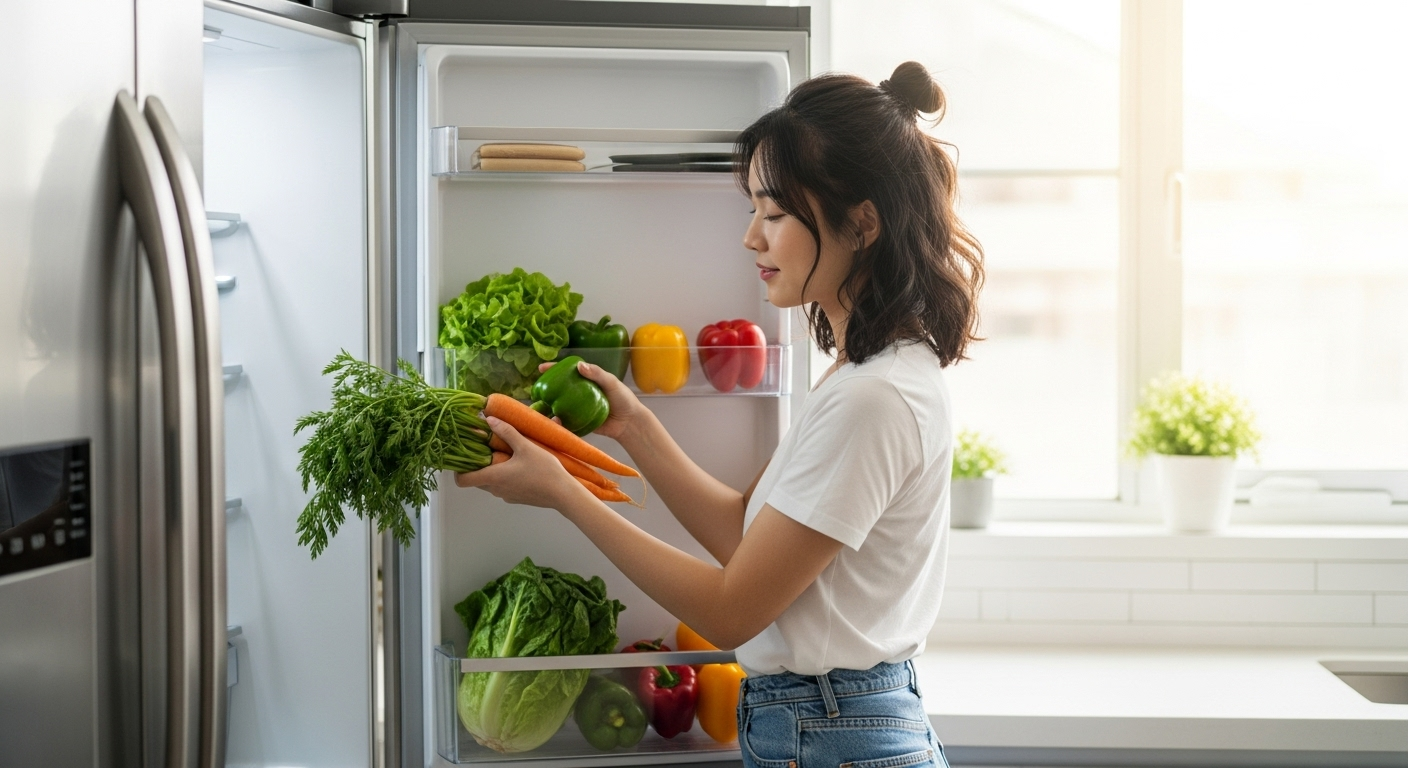Fridge Fails: The Foods You’re Storing Wrong for Optimal Freshness
In the heat of summer, it’s a common reflex: bring groceries home, especially fresh produce, and immediately tuck them into the refrigerator. Our intention is good – to prevent spoilage and keep food fresh. However, this isn’t always the best strategy for every fruit and vegetable. In fact, for some items, refrigeration can actively degrade their flavor, texture, and even nutritional value.
Are you unknowingly making common fridge mistakes that are costing you deliciousness and nutrients? Let’s uncover which foods are better off outside the cold and how to store them for peak freshness.
Onions: Cool, Dry, and Alone
Whole, unpeeled onions are surprisingly resilient outside the fridge. In fact, refrigerating them can make them soft and moldy due to the humidity. Instead, store whole onions in a cool, dark, and well-ventilated spot, away from direct sunlight. A pantry, a mesh bag, or even a breathable basket on your counter (if it’s not too warm) works well.
Storage Tip: Avoid storing whole onions next to potatoes. Onions release gases that can accelerate potato spoilage, and potatoes release moisture that can make onions rot faster.
What about cut or peeled onions? Once an onion is cut or peeled, its protective layers are gone, and it becomes much more susceptible to spoilage. At this point, transfer it to an airtight container and store it in the refrigerator’s crisper drawer.
Melons: Whole at Room Temp, Cut in the Cold
Large, whole melons like watermelon and cantaloupe might seem like they belong in the fridge, especially on a hot day. However, studies show that refrigerating whole melons can actually diminish their antioxidant content and alter their flavor.
Storage Tip: Keep whole, uncut melons at room temperature in a well-ventilated area, like your kitchen counter or pantry. This allows them to maintain their full flavor and nutritional benefits.
Once you’ve cut into a melon, the rules change. The exposed flesh needs protection from bacteria. Wrap cut melon tightly in plastic wrap or transfer it to an airtight container and refrigerate it promptly.
Potatoes: The Cool, Dark Truth
Potatoes are another common fridge casualty. Storing raw potatoes in the refrigerator’s cold, humid environment can turn their starch into sugar, resulting in a gritty texture and an unpleasantly sweet taste when cooked. It can also cause them to sprout faster.
Storage Tip: The ideal place for unwashed potatoes is a cool, dark, and well-ventilated spot, such as a pantry, basement, or a breathable paper bag. Avoid plastic bags, as they trap moisture and encourage spoilage.
Pro-Tip: While onions and potatoes are storage enemies, apples can be a potato’s best friend! Storing an apple with your potatoes can help prevent them from sprouting, thanks to the ethylene gas apples naturally release.
Garlic: Air is Key for Whole Bulbs
Often hailed for its health benefits, garlic, much like onions and potatoes, prefers a dry, well-ventilated environment when stored whole. Refrigerating whole garlic bulbs can lead to mold and sprouting.
Storage Tip: Keep whole garlic bulbs in a cool, dark, and dry place. A mesh bag or an open container in your pantry is perfect.
What about peeled or minced garlic? Peeled garlic cloves should be stored in an airtight container in the refrigerator. For extended freshness, some find success by placing a layer of sugar and a paper towel at the bottom of the container before adding the cloves. For maximum convenience and shelf life, minced garlic can be frozen in a freezer-safe bag or ice cube tray for easy use in cooking.
Tomatoes: Flavor First
Many people instinctively put fresh tomatoes in the fridge, but this can be a grave mistake for their flavor and texture. The cold air can break down the membranes in the tomato, leading to a mealy texture and a significant loss of their vibrant taste.
Storage Tip: For whole, unripe tomatoes, leave them on your kitchen counter or in a bowl at room temperature. This allows them to continue ripening and develop their full flavor. Once they are ripe, if you plan to eat them within a day or two, they can stay out.
When to refrigerate: If your tomatoes are fully ripe and you won’t be eating them immediately, or if they are cut, then refrigeration is necessary to prevent spoilage. Store cut or very ripe tomatoes in an airtight container in the fridge. Just remember to let them come back to room temperature before serving for the best flavor.
By understanding the specific needs of different produce, you can optimize their freshness, flavor, and nutritional value. Next time you unload your groceries, think twice before everything goes straight into the fridge!




